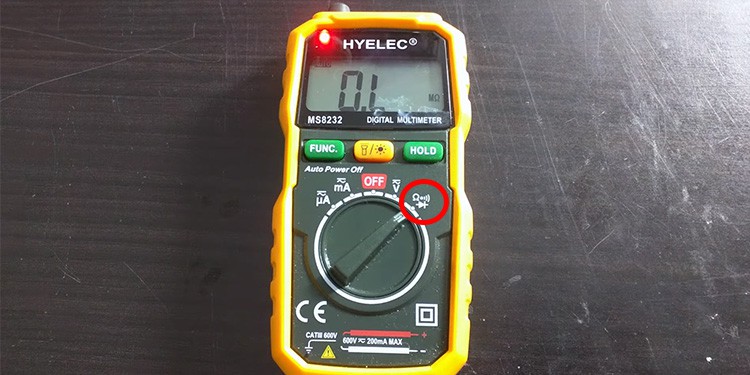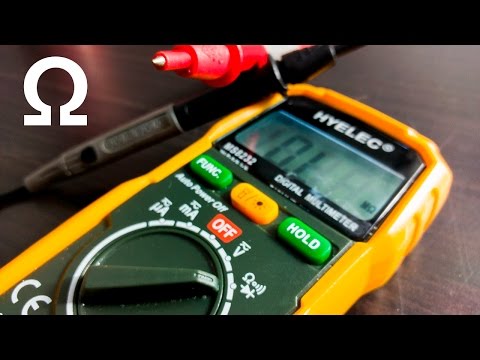If you haven’t heard of this before, it might seem a little complicated. Understanding a real-world scenario might help it become more clear. If your headphones stop working and the cable still looks good, you could use a continuity test to determine whether the cable is actually carrying the current or whether there is a break in the middle.
What is Continuity?
Electricity works across pathways that require connections to each part of the path to move the current from one place to another. If there’s a disruption in that electricity and one of the sections isn’t working, it’s likely that your electronic device won’t work either. When you use a multimeter to test for continuity, you’re checking to see whether the electrical pathway is open and the current is flowing between each point.
What Is the Continuity Test Looking for?
The essential explanation is that a continuity test looks for continuity of electrical flow. It ensures that electric current is moving through a device or wire. The test checks whether each part of the path is connected on a closed-loop. If the switch is open between the two points being tested, then the loop is open, and there is no continuity. Most multimeters will beep when a closed-loop and operational continuity are detected. Generally, if there is no beep, it’s open and not continuous. However, models without a continuity test may be able to measure the resistance but won’t give you a beep alert to inform you about continuity. Continuity tests can help you diagnose invisible problems with all kinds of electronics. For example, if you’re using a continuity test on a motherboard, you might be checking to be sure you haven’t blown part of the board that you can’t see. Many people use it to test the different leads that go into the ATX power connector.
How Does the Continuity Test Work?
When you touch two contact points with the probes, the multimeter sends a small current into the contacts. It measures the resistance in the circuit with this current and reports back to you whether the circuit is working. Some multimeters have different settings for when it beeps or displays a number. It’s essential to read the guide that came with the meter to understand what you’re hearing and seeing on the readout.
What Safety Measures Are Required for a Continuity Test?
You should always remove anything you’re testing from any source of power. If you’re testing something in your home connected to your fuses, turn off the primary power source for the house. It can be hazardous to do this kind of testing on a device getting power from another source.
What Symbol on the Meter Means Continuity Test?
This will vary depending on which multimeter you’re using. Look for a diode, which is like an arrow on a line pointing to a wall. It might also be a wave symbol. Check your manual to be sure.
How to Test Continuity With a Multimeter
Using a multimeter to test continuity should be pretty straightforward, and the process might vary a bit depending on the model. However, if you check your manual, you should find differences before starting and know where your steps diverge. This should let you know whether the circuit is functioning and whether there is continuity between the two places you touched. However, you can also use a continuity test with a multimeter to find which wire in a cable is matched to a wire on the other end of the cable. Cables are often made from twisted bundles of wires, and you can’t always tell which on the left end goes with which on the right end. If you need to know, test in the following manner. This can help you know exactly which wire is connected even when you can’t follow the path visually.
What Do the Continuity Test Results Mean?
If the thing you’re testing is broken or not working, you’ll see a test reading of OL, which means open loop. You also might see an unexpectedly low or high resistance. In that case, you might need to get a new part if you can’t repair that component. There are two kinds of test devices to consider: load and non-load components. As long as a non-load component shows some resistance, it should function fine. However, a load component with resistance that registers but is too low for the device won’t work correctly. If the resistance is outside the workable range, you may need to repair or replace it. Sometimes, finding a connection with no continuity means having a shorted wire. It could also signal that it’s loose, and properly attaching it might fix the problem. As always, read your manual to understand the output that you see after performing the test. Remember, even wires and electronics that are gently and properly used will degrade. Everything has a lifespan. So even if you don’t see any problems when you look at a device, there could be an invisible problem. Knowing the basics of how to test continuity with a multimeter can help you troubleshoot all kinds of problems, whether you’re reusing old computer parts or trying to figure out why an appliance isn’t working.






